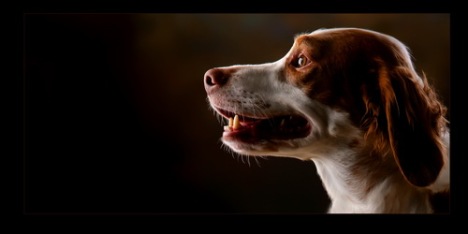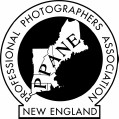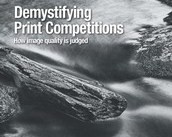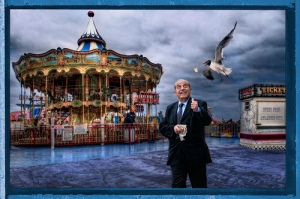
HAPPY GO LUCKY: Jim LaSala created this award-winning, surrealistic photo composition from the two images below.
In a previous post on Studio LexJet, Dustin Flowers talked about how the career of fine-art photographer Theo Anderson has evolved. To illustrate just how different each photographer’s career path and vision can be, let me tell you about Jim LaSala. He lives in New Jersey, but grew up in Brooklyn.
Jim LaSala didn’t become a professional photographer until he was 43. Before taking the plunge and turning pro, he had been active in his local camera club, taken computer courses at a community college, and joined Professional Photographers of America (PPA) at both the state and national levels.
He started out working for a wedding photographer and shooting some on-location portraits on the side. Now, he is channeling his talents in a more artistic direction—using Adobe Photoshop with the Vertus Fluid Mask plug-in to create unconventional photo compositions that will appeal to any photo buyer who likes stylized portraits and scenic imagery with a surrealistic twist.
Surrealistic art is fascinating to look at because it invites us to leave reason and logic behind and enter the realm of dreams, imagination, and madness. Until Photoshop and other imaging software came along, surrealist photographers experimented with techniques such as double exposures, combination printing, montages, and solarization. These methods were often time-consuming, unpredictable and unrepeatable.
LaSala knows this because he dabbled with many of these photographic techniques himself, including painting with light. He would go into his studio with a 4 x 5 camera, close all the lights, and use a light machine to paint over his subjects while the camera’s shutter was kept open. That process would take about an hour per image, and he says “You’d hope and pray it would turn out.” Sometimes, when the chromes would come back from the lab, he would shake his head and say, “Nah, that isn’t what I was looking for.”
So when LaSala first started using Photoshop (when it was version 3, not CS3), it was an eye-opening experience. He immediately recognized its creative possibilities and has since spent hours at the computer experimenting with it. He is awed by the creative tools included in each new version.
LaSala particularly likes using Photoshop with Vertus Fluid Mask, because Fluid Mask makes it so easy to precisely cut very detailed objects from one image so they can be inserted seamlessly into another. Some of LaSala’s photo compositions combine elements from three or more different photographs.
Printing Provides Immediate Gratification: With the 24-in. wide Epson Stylus Pro 7800 inkjet printer that he bought from LexJet, LaSala can instantly see how his photo compositions will look. He prints his work through the ImagePrint RIP onto LexJet’s Sunset Photo eSatin paper, which he says provides “tremendous, accurate colors.” With the high-quality profiles provided with the ImagePrint RIP, he doesn’t have to fuss with all the intricacies of color management. He says ImagePrint “has made printing a pleasure” and allow him to simply focus on being creative—whether he’s working in color or black and white.
Print Competitions: When you look at LaSala’s images, you’ll notice that there is something else going on besides masterful creative effects. That’s because LaSala learned the fundamentals of strong composition by having his work critiqued in print competitions. Over the years, his prints have won far too many state and national awards to list here. Eight of his images are included in PPA’s prestigious Loan Collection.
“Entering print competitions helped me tremendously,” says LaSala. “My understanding of color harmony, composition, and art came from getting involved with competitions.” Most of the elements he learned from PPA are applied to any type of photography he does.
He carries his camera everywhere, snapping shots of interesting-looking trees, flowers, skies, or objects that he then archives for future use.
In his photo compositions, LaSala combines different skies, backgrounds, and flowers with images of people he has photographed on the street. “I like to capture people just being themselves,” he says. “It tells more or a story.”
Back at the computer, he lets his imagination run free. When he begins each composition, he usually has an idea in the back of his mind. But he can’t always predict what the finished image is going to look like. To easily find the right images when he needs them, LaSala uses the powerful digital-asset-management capabilities of Adobe Photoshop Lightroom.
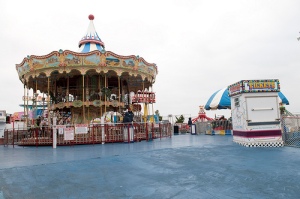 LaSala won the award for the Best Electronic Image at the spring competition of the the Guild of Professional Photographers of the Delaware Valley for the image entitled Happy Go Lucky (shown above). LaSala used Vertus Fluid Mask Pro to cut out the image of the man so it could be blended with the carrousel scene that he had shot using the HDR (high-dynamic range) process. LaSala shot the carrousel with five different exposures, then used the Photomatix Pro plug-in to combine the five images and achieve high levels of detail from the brightest highlights to the deepest shadows.
LaSala won the award for the Best Electronic Image at the spring competition of the the Guild of Professional Photographers of the Delaware Valley for the image entitled Happy Go Lucky (shown above). LaSala used Vertus Fluid Mask Pro to cut out the image of the man so it could be blended with the carrousel scene that he had shot using the HDR (high-dynamic range) process. LaSala shot the carrousel with five different exposures, then used the Photomatix Pro plug-in to combine the five images and achieve high levels of detail from the brightest highlights to the deepest shadows.
LaSala shot the image of the man while attending the NJ PPA convention in Atlantic City: “I followed him for a few minutes until I captured this great expression that looked as if he didn’t have a care in the world.” 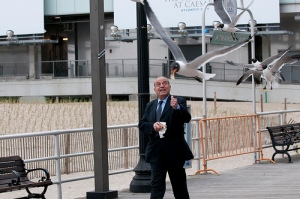 Back at the computer, LaSala looked for a combination of images that would make people wonder: “What’s the story?” He chose the carrousel image because it evokes the carnival-like atmosphere in Atlantic City, where many people experience mixed emotions.
Back at the computer, LaSala looked for a combination of images that would make people wonder: “What’s the story?” He chose the carrousel image because it evokes the carnival-like atmosphere in Atlantic City, where many people experience mixed emotions.
LaSala admits that his more surrealistic pieces probably won’t appeal to everyone. He has shown his work at galleries in New Hope, PA and currently is preparing for a major art festival in Ft. Lauderdale this fall. Designers of print publications who seek extraordinary illustrations for their layouts may also be interested in LaSala’s work.
As he continues to research the best markets for his art, LaSala is getting more involved in associations and education. He enjoys teaching workshops on Vertus Fluid Mask and is seeking to becoming certified to judge national print competitions.
In his workshops, LaSala emphasizes some of the business benefits of knowing how to create photo compositions. For example, if a portrait he shoots on location doesn’t look as good as it might, he can easily change out the background. LaSala also teaches portrait photographers with limited studio space how to shoot their portraits against a flip-up white background and then use Fluid Mask with Photoshop to create whatever background they want. As LaSala puts it: “No studio. No backgrounds. No problem.”
“It’s just amazing what can be done on the computer.” says LaSala. “Anything is possible in the end results. You just have to let your mind run and have a good time.”
If you’d like to learn more about Vertus Fluid Mask, attend one of LaSala’s workshops or arrange for a private consultation. The Fluid Mask software is available from LexJet.
If you have any questions about using the ImagePrint RIP to get perfect results on LexJet’s Sunset line of photo and art papers, you can call me or any one of the account specialists at LexJet at 888-873-7553.






